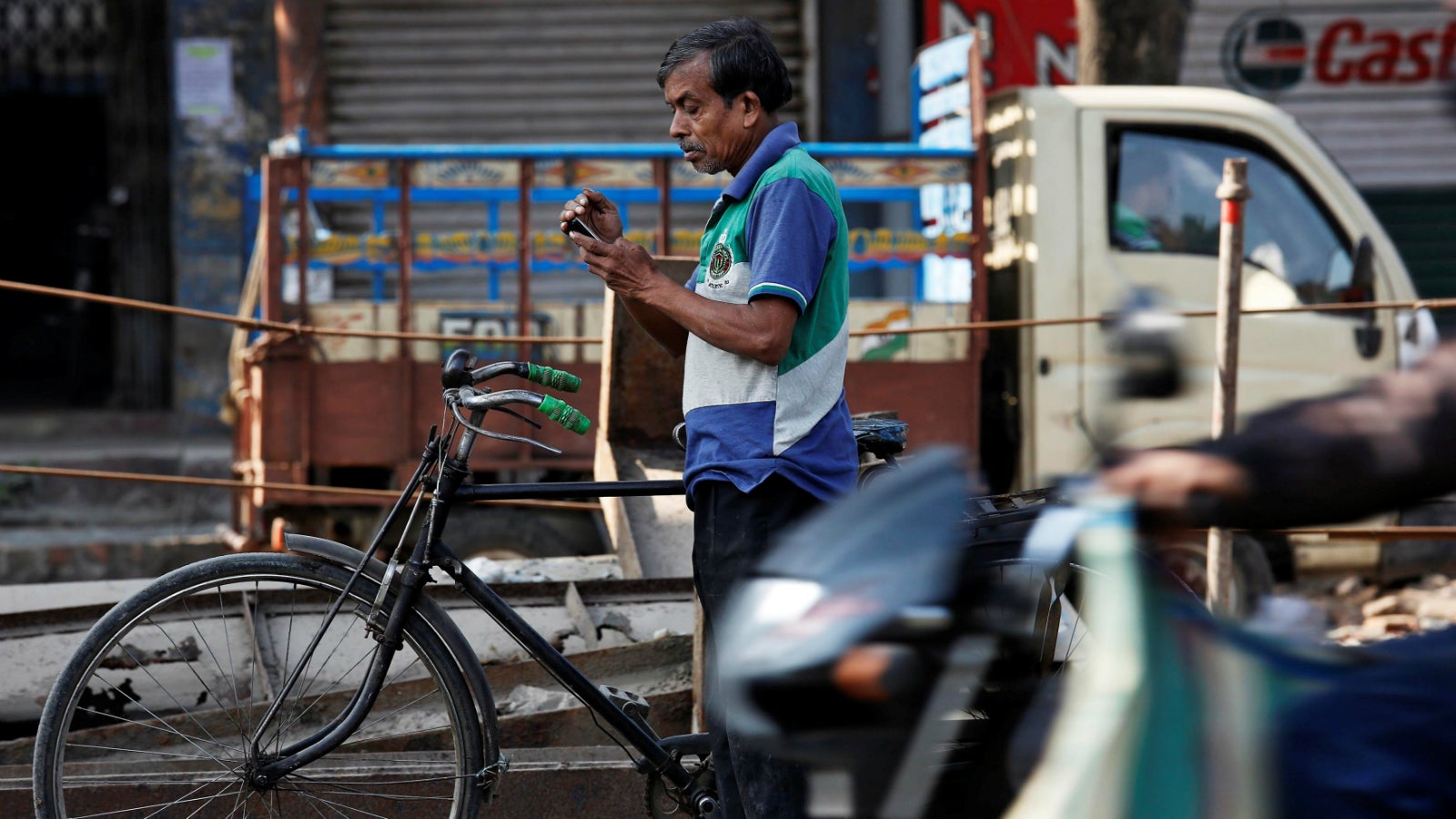India’s internet users have more faith in content that’s not in English
Local languages are going to be key in convincing the next billion users to come online.


Local languages are going to be key in convincing the next billion users to come online.
In the mid 1990s, 80% of the world wide web had English language content. By 2011, that share had fallen to roughly 27% as other languages—French, German, Spanish, Russian, and Chinese—spread online. India’s many languages, though, have lagged behind others.
Second only to the US, India has over 125 million English speakers. Online, English is still India’s lingua franca, but more of its 1.3 billion people can turn into netizens only if the online use of its 22 other official languages is encouraged. A recent study of 4,612 urban citizens and 2,448 rural Indians by management consultancy KPMG India and search giant Google found that nearly 70% of Indians consider local language digital content more reliable than English content.
Of all the internet-using native speakers of an Indian language, most prefer Hindi, the co-official language of the Indian union along with English. By 2021, an expected 201 million Hindi users—38% of the Indian internet user base—will be online, according to the KPMG-Google study.
Marathi, Bengali, and Tamil follow, capturing 9%, 8%, and 6% of the user base respectively.
So, native language apps and sites proliferate to make it easier for people to grasp online information.
Moreover, increasing the use of native languages could help chat applications and digital platforms deepen their user base.
The KPMG/Google report identifies a number of apps and web categories that currently have relatively low penetration rates in India but could see rapid growth if local-language integration picks up. Payments, government services, news, and classifieds all could grow at a compound annual growth rate (CAGR) between 26% and 34% from 2016 to 2021 if there is local-language expansion. For example, among those who traditionally shop offline, 50% were willing to shift online if provided with an end-to-end Indian language experience.
Similarly, over 60% of rural users consider language a barrier to accessing online government services, the report says. Increased use of Indian languages on the internet will come as a relief to them. It could also help better dissemination of regional news as almost 60% of Indian-language internet users prefer such news. Also, nearly 90% of them are more likely to respond to a digital advertisement in their local language as compared to English ads.
“Almost every new user that is coming online—roughly nine out of 10—is not proficient in English,” Google vice-president, India and south Asia, Rajan Anandan, told the Times of India. “So, it is fair to say that almost all the growth of usage is coming from non-English users.”
Indian language users already far exceed the number of English language users in the country and will continue to do so–their user base grew from 42 million in 2011 to 234 million in 2016. In the five-year period after that, Indian-language users are expected to grow at an additional rate of 18% to 536 million. In the same period, English-language users are likely to grow by a mere 3% to reach 199 million.
Meanwhile, technological advancement could aid and encourage the increased use of local languages. “Advance voice translation and recognition technology could help Indian language internet users, who find and search navigation using text inputs in their regional language a challenge,” the report suggests.
Other factors that will likely contribute to bringing India’s next billion online are reduced data charges, rising disposable income, growth in overall internet penetration and smartphone production, and improvements in digital literacy in rural India, as well as more Indian language-friendly devices and websites.
While Reliance Jio’s low prices and freebies are already moving in that direction, companies like Google are increasingly providing Indian language interface and content. For instance, in April 2017, Google Translate began carrying out neural translations between English and nine widely used Indian languages.
Similarly, domestic handset-maker Micromax uses regional language operating system Indus to tap into the non-English speaking share of the market. Chinese phonemaker Xiaomi’s latest handset, Redmi 4A, too, supports 13 Indian languages.